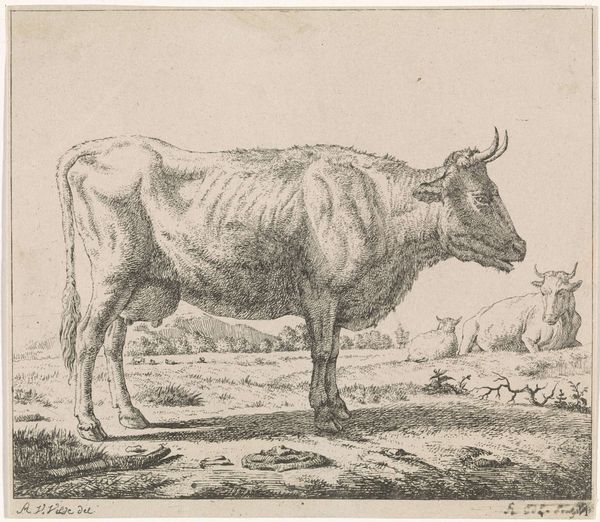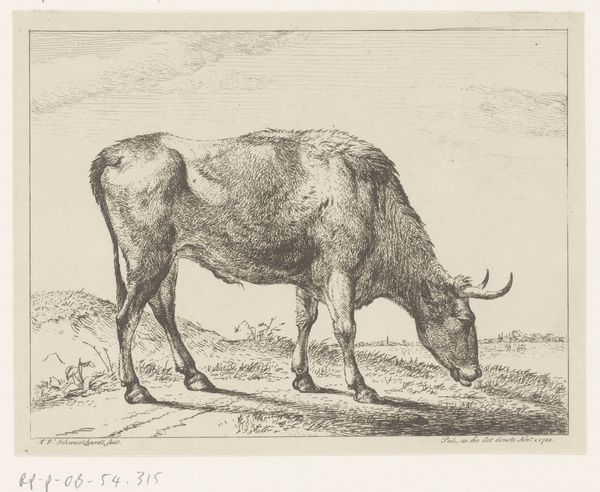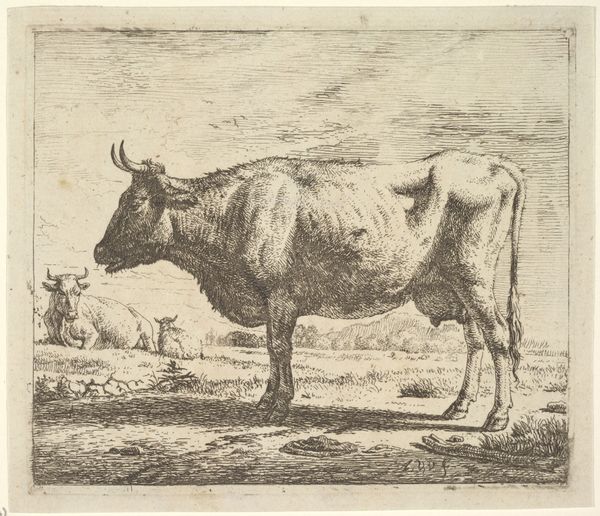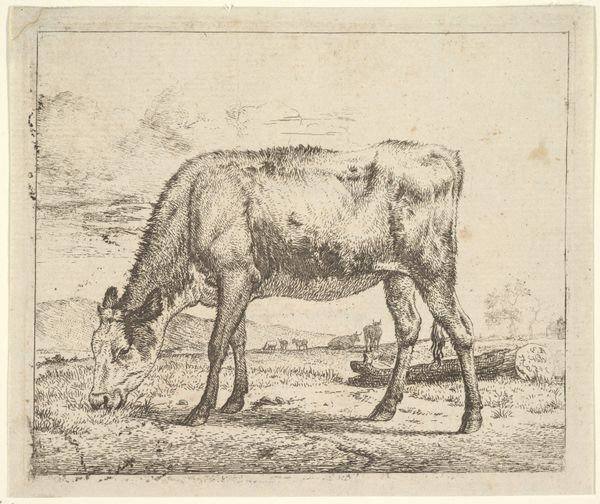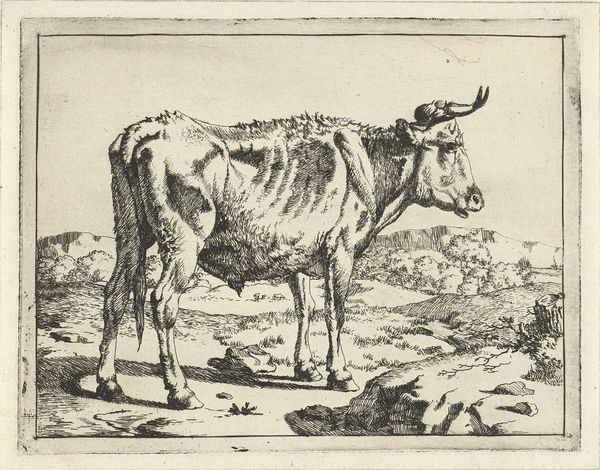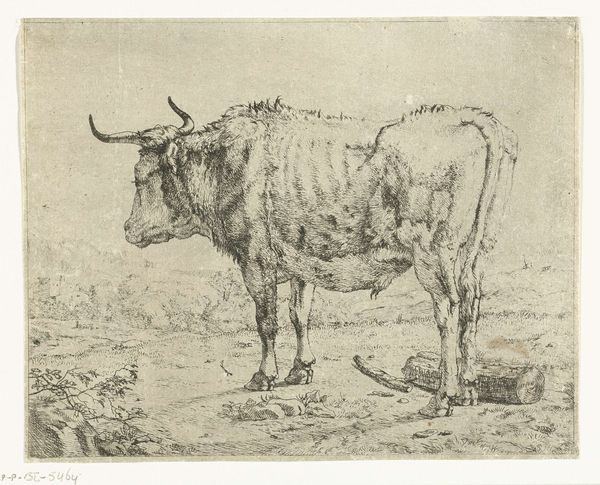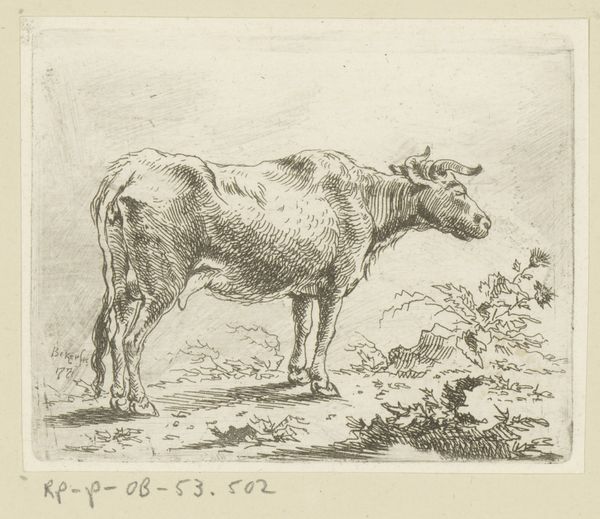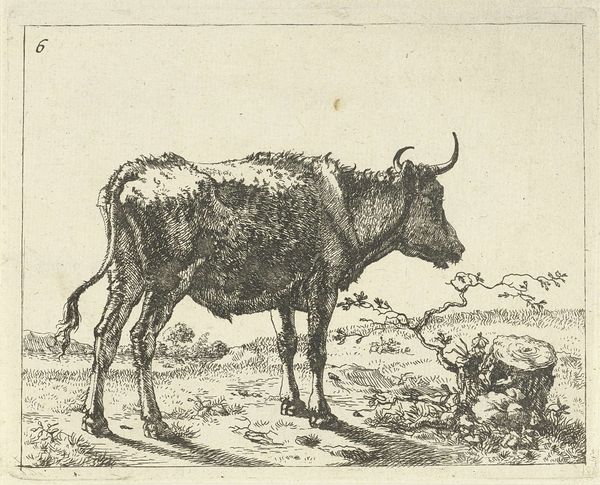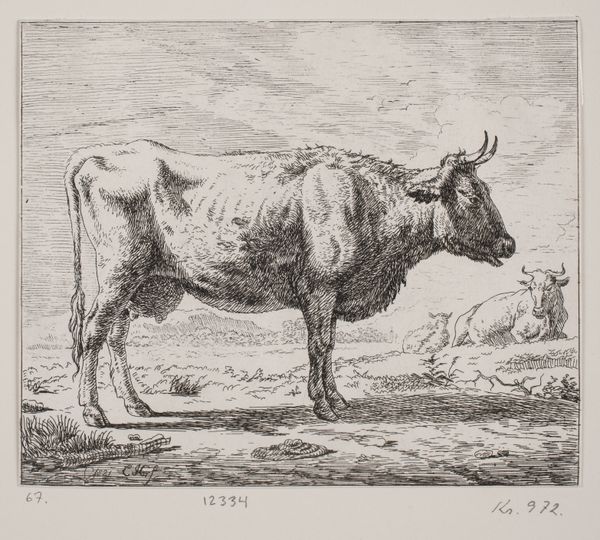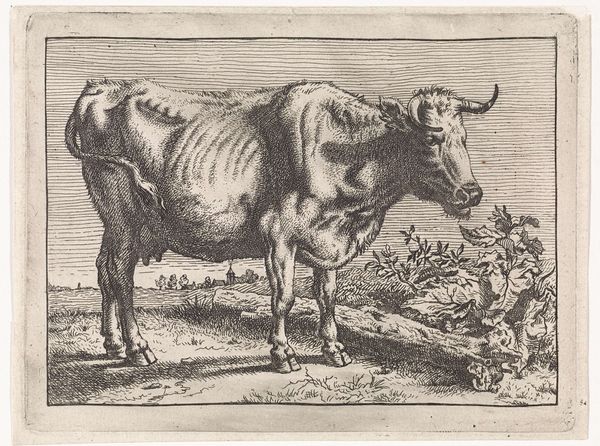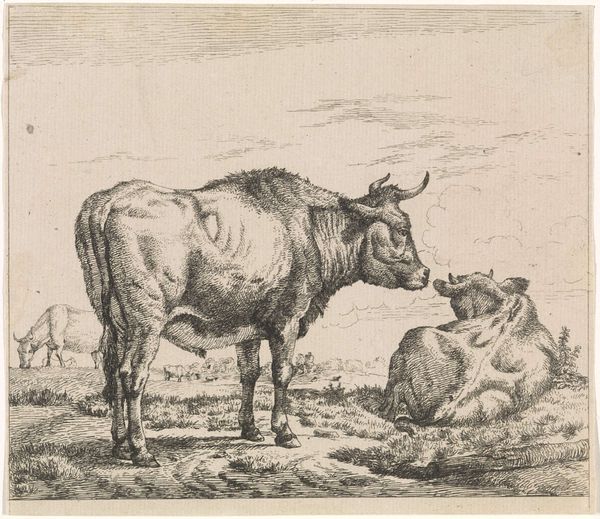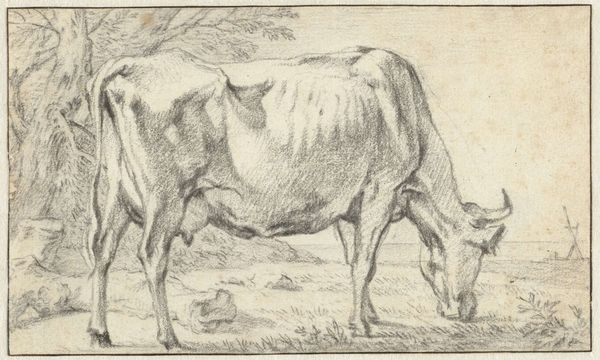
drawing, print
#
drawing
# print
#
landscape
#
genre-painting
#
realism
Dimensions: sheet: 5 1/2 x 7 1/16 in. (14 x 17.9 cm)
Copyright: Public Domain
Curator: This print, "Cow, after Paulus Potter," created between 1650 and 1690 by Marcus de Bye, is a remarkable example of realism in landscape. What are your initial thoughts on it? Editor: My immediate response is that it’s unexpectedly somber. The etching's starkness really emphasizes the cow's vulnerability, particularly with how visible its ribs are. There’s a fragility to the scene despite the subject being such a large animal. Curator: It's interesting that you read vulnerability. I see that too, but perhaps a bit differently. In the context of 17th century Dutch art, the cow became a symbol of national prosperity, a reflection of the booming agricultural economy. Yet, situating this work within broader economic narratives, we must also consider labor inequities and access to resources within the economic structure of the time, especially the farmers who labored tirelessly. This cow becomes more than just an animal; it embodies labor itself, made all the more poignant by her exposed ribs. Editor: Ah, yes, I understand the wealth association. The cow is nourishment and prosperity. But even considering the time period, that animal looks burdened. In art historical symbolism, cows often represent gentleness and patience. Perhaps those visible ribs amplify the implied virtues, suggesting quiet perseverance amidst hardship? The humble cow, quietly nourishing the world. Curator: Precisely. Consider the tradition of Dutch animal painting that Potter established. This piece challenges a purely celebratory reading of national wealth, nodding at issues of marginalization and inequality within what might seem like straightforward prosperity. I am very much interested to view this through the lense of labour and what that symbolizes. Editor: And de Bye’s choice of the print medium is insightful. The stark lines offer an unromanticized depiction. What would have been opulent and glossy if painted becomes quite raw and almost confrontational here, which strengthens that narrative. Curator: Yes. And the work resides here in the Met, inviting us to reconsider historical representations of the pastoral. The cow transcends the image; she evolves as laboring icon. Editor: Absolutely. The choice to recreate and reinterpret highlights an interesting complexity to the layers of meanings, offering endless readings. Curator: Food for thought, indeed, prompting questions regarding visual interpretation. Editor: Definitely a powerful take on this animal—it leaves you with an entirely new perception.
Comments
No comments
Be the first to comment and join the conversation on the ultimate creative platform.
